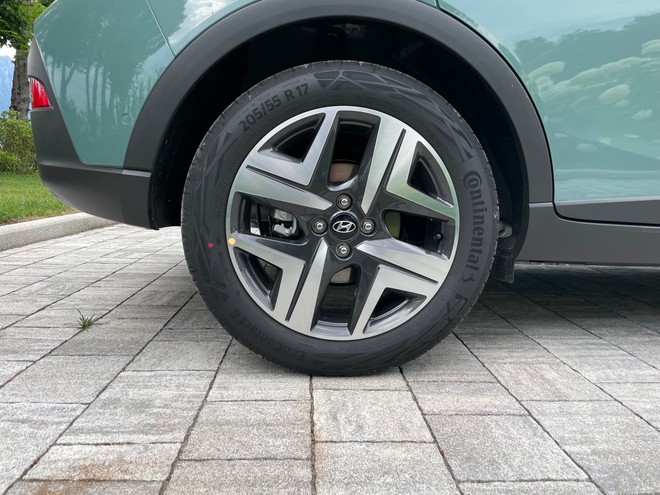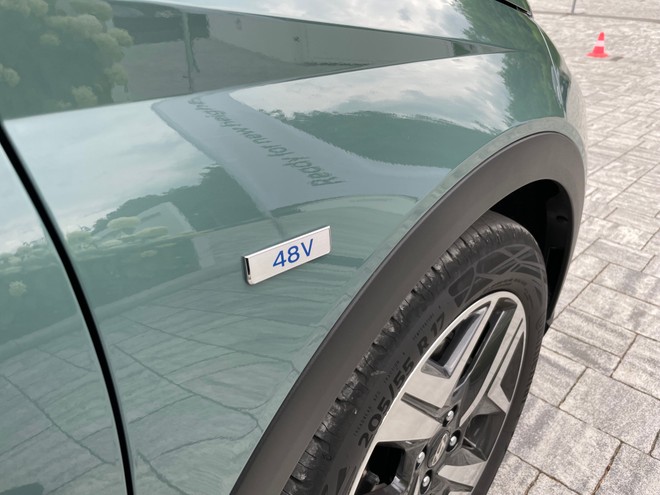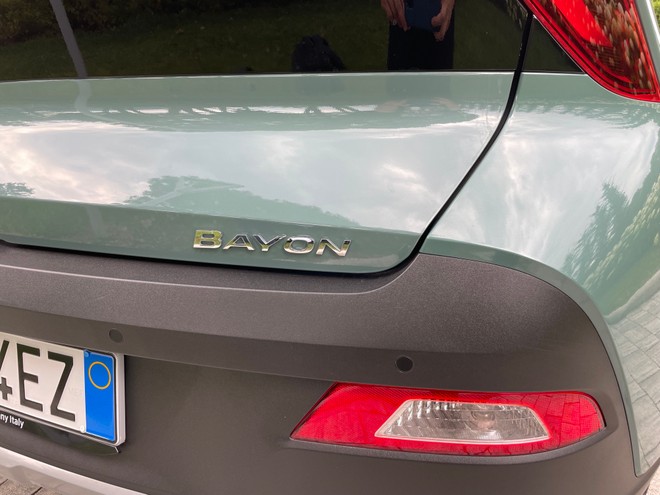In dealerships for a little while longer; of a month the new Hyundai Bayon represents the answer of the Korean car manufacturer to all those looking for a compact B-SUV but, at the same time , equipped with a lot of space both in the trunk and for those who sit on board.
From the parts of Seoul they define it as an urban-crossover by perfectly delineating what should be its intended use: a & # 39; 39; everyday car, which does not disdain for & ograve; the trip out of town on Sunday. After having previewed it static at the beginning of the month of April & egrave; the time has come to take a tour and tell you a little our first impressions.
SUMMARY
- DESIGN AND INTERIORS
- TECHNOLOGY AND SAFETY
- TECHNICAL SHEET
- HOW DO YOU GO?
- PRICES AND EQUIPMENT
- VIDEO
SPACIOUS AND VOTED FOR COMFORT 

Hyundai Bayon was born on the same platform as i20 and is positioned in terms of size in the middle & agrave; road between the just mentioned and the now known Kona. The comparison with the latter is therefore almost obliged and if we talk about Bayon measures & egrave; more short of 2 centimeters, more & ugrave; narrow by 2.5 and the same high in the version with 17-inch alloy wheels. Ground clearance is also similar, it goes from 165 to 183 mm depending on the version, against the 170 mm of Kona. In favor of the latter, instead, the step: it goes from 258 cm for Bayon to 260 for Kona.
Net of the smaller footprint the feature that distinguishes the latest arrival from Hyundai is a space on board certainly noteworthy , especially in relation to the average of the market segment. The trunk in the standard configuration, with the seats raised, offers a capacity; of 411 liters, which become 1205 with the seats folded down. Also interesting is the solution adopted to & quot; hide & quot; the hatbox, thus; as the possibility; to raise the loading surface so that it is aligned with the inlet of the boot.

The space available to those sitting in the rear seats is also good with the sofa divided into three almost equal parts and a very low central tunnel that guarantees good comfort even for those who sit in the middle seat. The roof does not rain excessively as we get closer to the bottom of the car and therefore also the passengers more tall ones shouldn't have any problems.
If we move to the driver's seat we then notice how the dashboard used is exactly the same as the i20. All the instrumentation is; distributed between the steering wheel and the touch display for the infotaiment, with the exception of the climate controls which are reproduced under the central air conditioning vents. Just below we find two USB ports and the wireless charging mat.
The materials used for the construction of the dashboard and the door trim are of good quality. Of course we cannot expect the same finishes as the premium cars but for what it is; the reference segment, in my view, is here very little to complain about. The plastics are soft and absorb vibrations well, while something more could have been done; in terms of sound insulation of external noises. In fact, at high revs the engine makes itself quite audible, so it is; such as tire rolling, especially on fast-moving roads with draining asphalt a p & ograve; raw.
In terms of visibility the first impact & egrave; very good, the only little 'flaw' is in the left pillar which is perhaps a little cumbersome and slightly hinders the view on the left turns and exiting the stops. Nothing too compromising, however, will suffice for you; & quot; get an eye on us & quot ;.
TECHNOLOGY AND ADAS 

The pillars of Hyundai's philosophy are Technology and Safety , both well represented in this Bayon. Already in fact, the basic set-up offers interesting contents for both these themes. As soon as we get on board & egrave; impossible not to notice the two large 10.25-inch displays. The first, placed behind the steering wheel, is; the one on which all the instrumentation and information of the on-board computer are shown; the second & egrave; instead positioned in the center of the dashboard and & egrave; the one used for the infotaiment system.
Let's talk about the classic bluelink, which already has; well we know and that integrates Android Auto and Apple Carplay. The model with 10.25-inch display allows you to connect the smartphone only via cable, while if you choose the option with 8-inch display you can also count on the wireless connection. An oddity due to the fact that the system that drives the 10-inch displays has not yet received the necessary certifications; Hyundai does not rule out the possibility; to add the option with a posthumous update.

Said us & ograve; the system i & egrave; sufficiently reactive delivery, precise touch and visibility; Great. So if you are wondering what the weak point is, I would probably say the interface design, a little bit to be updated and not 100% intuitive.
Speaking of ADAS, the availability; of tools for driving aid & egrave; really very high and already; in the basic version with set-upXLine we find a pedestrian, vehicle and cycle recognition system, lane maintenance, front and rear parking sensors, traffic sign recognition, driver attention warning and High Beam Assist . With 2,250 euros we then move on to the XClass set-up which adds the Blind Spot Collision Warning. To complete the equipment, the Safety & amp; package must be added. Tech which requires an additional 1,700 or 2,100 euros (MT/iMT – DCT).
DATA SHEET
- Engine : four cylinders 1.2 MPi – three 1.0 T-GDi MHEV cylinders (Euro 6D)
- Power : 84 hp/117 Nm – 100 hp/171 Nm
- 0-100 km/h : 13.5 – 10.7 s
- Speed maximum : 165/183 km/
- Front suspension : McPherson
- Rear suspension : torsion beam
- Tires : 165/65 R15, 195/55 R16, 205/55 R17
- Weight in o. d. m .: 970 kg
- Luggage compartment min/max : 411/1.205 liters
- Length : 4.180 mm
- Width : 1.775 mm
- Height : 1.490 mm
- Wheelbase : 2,580 mm
- Ground clearance : 16.5 – 18.3 cm
- Weight : 1.045/1.255 kg
- Heading diameter : 10.4 meters
- Declared emissions (WLTP) * : 134-143 g (1.2 MPi) – 118-136 g (1.0 T-GDi 48V)
HOW IT WORKS ON THE STREET 
The iMT change is; the new manual with & quot; by-wire & quot; clutch: it remains the classic six-speed lever but the system can disconnect the transmission, uncouple the engine and sail even in apparently engaged gear, imitating one of the old school hypermiler techniques but making its operation almost invisible.
A change that & egrave; very responsive , with a very light clutch and fairly short ratios. A detail that allows us to have a good recovery even in fourth or fifth gear but which, on the other hand, does not allow us to obtain speed; peak who knows & agrave; how high. A sixth gear a little bit more long would not have spoiled but even so & igrave; you travel comfortably.
Having said that the 1.0 100 HP, also thanks to the battery and the support provided by the electric engine, & egrave; quite lively . Obviously you don't think you are in front of a supercar, but that's enough to have a little fun in a mixed path like the one we faced in our test.
In support of this vivacity; then we find a dynamic that perhaps I would not have expected. The steering is precise and direct, cornering is not required; practically never a problem and the feeling is; that of a car that in standard conditions is always well balanced. Of course there is a little bit of roll and pitch, mainly due to the suspension settings which are obviously set to favor comfort; absolutely normal and non-impacting behaviors in terms of difficulty; in car management.
PRICES AND EQUIPMENT 

The entrance set-up (XLine) tries to propose itself however as complete, including as standard the functionalities; base for active safety, Android Auto Wireless and Apple CarPlay Wireless . The wireless connection with smartphones is; standard because & eacute; functionality & egrave; own of the 8 & quot; Auto Display System , the entrance version that on the more set-ups rich & egrave; replaced by AudioVideoNavigation by 10.25 & quot; which must be connected with the USB cable.
The starting price is; of 19,400 euros for the XLine version and rises to 21,650 for the XClass. In both cases, the introductory offer includes a Hyundai promotion (-1200 euros) and a scrapping discount of 1,400 euros which leads to a total of 2,600 euros less on the list prices. Having access to both of these discounts & egrave; it is therefore possible to take home the new Bayon starting from 16,800 euro . Staying at Hyundai and looking at Kona the difference between the basic versions, with promotions applied to both models, & egrave; of 2,950 euros.
Later will come & agrave; also Hyundai Bayon on LPG as confirmed by the Italian division of the brand, while not giving us indicative dates on the precise release in our market.
VIDEO
The best Xiaomi for photos without 5G? Redmi Note 10 Pro, buy it at the best price from Amazon Marketplace at 367 euros .